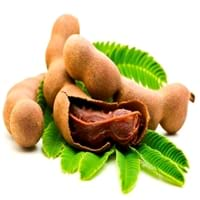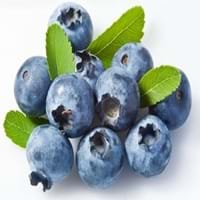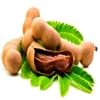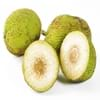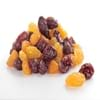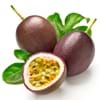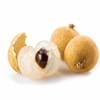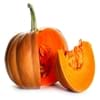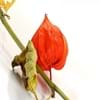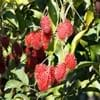Health Benefits
Boosts immune system, Boosts respiratory health, Cancer prevention, Digestive aid, Piles treatment
Cancer prevention, Cures gastro-intestinal troubles, Improves night vision, Improves stomach health, Prevents diabetes, Prevents high blood pressure, Reduces blood circulation problems
General Benefits
Beneficial in improving nerve function, Protects against parasites and worms, Relieves pain
Fights against infections, Helps in weight loss, Prevents blood clotting in vessels, Treatment of urinary tract infections
Skin Benefits
Anti-aging benefits, Brightens and lightens complexion, Exfoliates skin, Hydrates skin, Treatment of dark spots
Anti-aging benefits, Nourishes skin, Protects against skin damage
Hair Benefits
Prevents hair loss
Prevents hair loss
Allergy Symptoms
Abdominal pains, Breathing difficulty, Dizziness, Eczema, Fainting, Hives, Itching, Nasal congestion, Swelling of face, Tingling sensation in mouth, Vomiting
Not Available
Side Effects
Decrease in blood sugar levels, Induces acid reflux, Allergic reaction, Tooth decay, May form gallstones
Decrease in blood sugar levels, Diarrhoea, Dizziness, Headache, Internal bleeding, Stomach pain
Best Time to Eat
Along with meal, As a snack in the late afternoon, Don't consume at night and before bed, Strictly avoid empty stomach
As a snack in the late afternoon, Don't consume at night and before bed, Eat the fresh ones, avoid mixing with any other foods, don't eat after meal., Morning time (before lunch)
Vitamin B5 (Pantothenic Acid)
Vitamin C (Ascorbic Acid)
Vitamin K (Phyllochinone)
Phytosterol
Not Available
Calories in Fresh Fruit with Peel
Not Available
Calories in Fresh Fruit without Peel
Not Available
Calories in Frozen Form
Not Available
Calories in Dried Form
Not Available
Calories in Canned Form
Not Available
Not Available
Season
Spring, Summer
Summer
Varieties
PKM 1, Urigam, Hasanur, Tumkur prathisthan, DTS 1 and Yogeshwari
Dwarf bilberry, Piper, bog blueberry, Northern bilberry, Mountain bilberry and Oval-leaved bilberry
Color
Brown, Reddish-brown
Dark purple
Inside Color
Brown
Light Green
Shape
Curving Cylinder
Round
Soil Type
Loam, Sandy, Sandy loam, Well-drained
Moist, Well-aerated
Climatic Conditions
Humid to dry, Rainfall, Warm to hot climate
Cold
Facts about
- Tamarind is used to prevent body odor.
- African children use the tamarind seeds in games.
- No cases of tamarind toxicity or allergy reported till date.
- Bilberries are used in manufacturing of alcoholic drinks.
- They are used to improve aromas of sorbets.
- The green extract of it's leaves is used in textile industry as natural dye.
Other Countries
Africa, Australia, Brazil, China, Mexico, Nigeria, Sudan, Taiwan
Denmark, Finland, Iceland, Sweden
Top Importer
United States of America
United States of America
Top Exporter
Thailand
Chile
Botanical Name
Tamarindus indica
Vaccinium myrtillus
Synonym
Tamarindo, tamarindus
blaeberry, whinberry, European blueberry, whortleberry
Subkingdom
Tracheobionta
Tracheobionta
Division
Magnoliophyta
Magnoliophyta
Class
Liliopsida
Magnoliopsida
Subclass
Rosidae
Dillenhidae
Family
Fabaceae
Ericaceae
Genus
Tamarindus
Vaccinium
Species
Tamarindus indica
Vaccinium myrtillus
Generic Group
Tamarind Sub
Heath
Difference Between Tamarind and Bilberry
We might think that Tamarind and Bilberry are similar with respect to nutritional value and health benefits. But the nutrient content of both fruits is different. Tamarind and Bilberry Facts such as their taste, shape, color, and size are also distinct. The difference between Tamarind and Bilberry is explained here.
The amount of calories in 100 gm of fresh Tamarind and Bilberry with peel is Not Available and 44.00 kcal and the amount of calories without peel is 239.00 kcal and Not Available respectively. Thus, Tamarind and Bilberry belong to High Calorie Fruits and Low Calorie Fruits category.These fruits might or might not differ with respect to their scientific classification. The order of Tamarind and Bilberry is Fabales and Ericales respectively. Tamarind belongs to Fabaceae family and Bilberry belongs to Ericaceae family. Tamarind belongs to Tamarindus genus of Tamarindus indica species and Bilberry belongs to Vaccinium genus of Vaccinium myrtillus species. Beings plants, both fruits belong to Plantae Kingdom.
